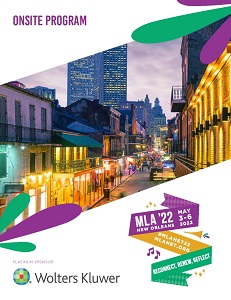Back
Paper: Research Abstract
Education
Session: Education Session 4
Building Question Formulation Skills Among Dental Hygiene Students
Friday, May 6, 2022
10:30 AM – 10:45 AM CT
Location: 353

Jonathan D. Eldredge, AHIP, FMLA
Professor
UNM Health Sciences Library and Informatics Center
Albuquerque, New Mexico- CN
Christine Nathe, RDH, MD
Professor and Director
Dental Hygiene
Albuquerque
Presenter and Author(s)
Author(s)
Objectives: Dental hygiene students at our institution learn Evidence Based Practice skills during their second year. We noted over the years that students markedly improved their formulated questions after training and application of their skills with the assistance of a rubric.
Research Question: How much training do students require in order to use the question formulation rubric effectively: a brief 5-minute overview or a 25-minute training that includes a student peer assessment application exercise?
Methods:
Randomized controlled trial. All pre-randomized 24 students took the question formulation pre-test on the first day of the course on January 22nd. The two instructors scored the students’ formulated questions with the students’ identities concealed. As expected, there were no statistical differences between the intervention or control group pre-test scores. The instructors administered the post-test on February 19th after the Intervention group had received the training and rubric with the Control group only having received the rubric with a brief explanation. The instructors scored the Intervention and Control group post-tests with the students’ identities concealed.
Results:
The investigators employed a paired t-test to analyze the pre- and post-test score differences for each student in the Intervention and Control groups. Surprisingly, the students' average post-test scores were 41.75 for the Control group and 43.67 for the Intervention group on a 70-point scale, which were not markedly different. The initial paired t-test of the post-test scores confirmed no statistical difference either. Further analysis revealed a bifurcation in post-test scores with six (6) students in the Control group scoring considerably higher than their classmates. Interviews discovered that four (4) of these students collaborated with their fellow students in the Intervention Group following the instruction so they actually did benefit from peer instruction. In other words, some contamination occurred. The other two (2) students learned and practiced alone using the rubric.
Conclusions: : The initially surprising results became less surprising with some further analysis and by interviewing students who appeared to score higher than expected. The additional analysis suggests that Dental Hygiene students benefit by experiencing extra instruction, with the cautionary caveats that this study was limited by some contamination and that it took place during the Covid-19 era.
Research Question: How much training do students require in order to use the question formulation rubric effectively: a brief 5-minute overview or a 25-minute training that includes a student peer assessment application exercise?
Methods:
Randomized controlled trial. All pre-randomized 24 students took the question formulation pre-test on the first day of the course on January 22nd. The two instructors scored the students’ formulated questions with the students’ identities concealed. As expected, there were no statistical differences between the intervention or control group pre-test scores. The instructors administered the post-test on February 19th after the Intervention group had received the training and rubric with the Control group only having received the rubric with a brief explanation. The instructors scored the Intervention and Control group post-tests with the students’ identities concealed.
Results:
The investigators employed a paired t-test to analyze the pre- and post-test score differences for each student in the Intervention and Control groups. Surprisingly, the students' average post-test scores were 41.75 for the Control group and 43.67 for the Intervention group on a 70-point scale, which were not markedly different. The initial paired t-test of the post-test scores confirmed no statistical difference either. Further analysis revealed a bifurcation in post-test scores with six (6) students in the Control group scoring considerably higher than their classmates. Interviews discovered that four (4) of these students collaborated with their fellow students in the Intervention Group following the instruction so they actually did benefit from peer instruction. In other words, some contamination occurred. The other two (2) students learned and practiced alone using the rubric.
Conclusions: : The initially surprising results became less surprising with some further analysis and by interviewing students who appeared to score higher than expected. The additional analysis suggests that Dental Hygiene students benefit by experiencing extra instruction, with the cautionary caveats that this study was limited by some contamination and that it took place during the Covid-19 era.

.png)
